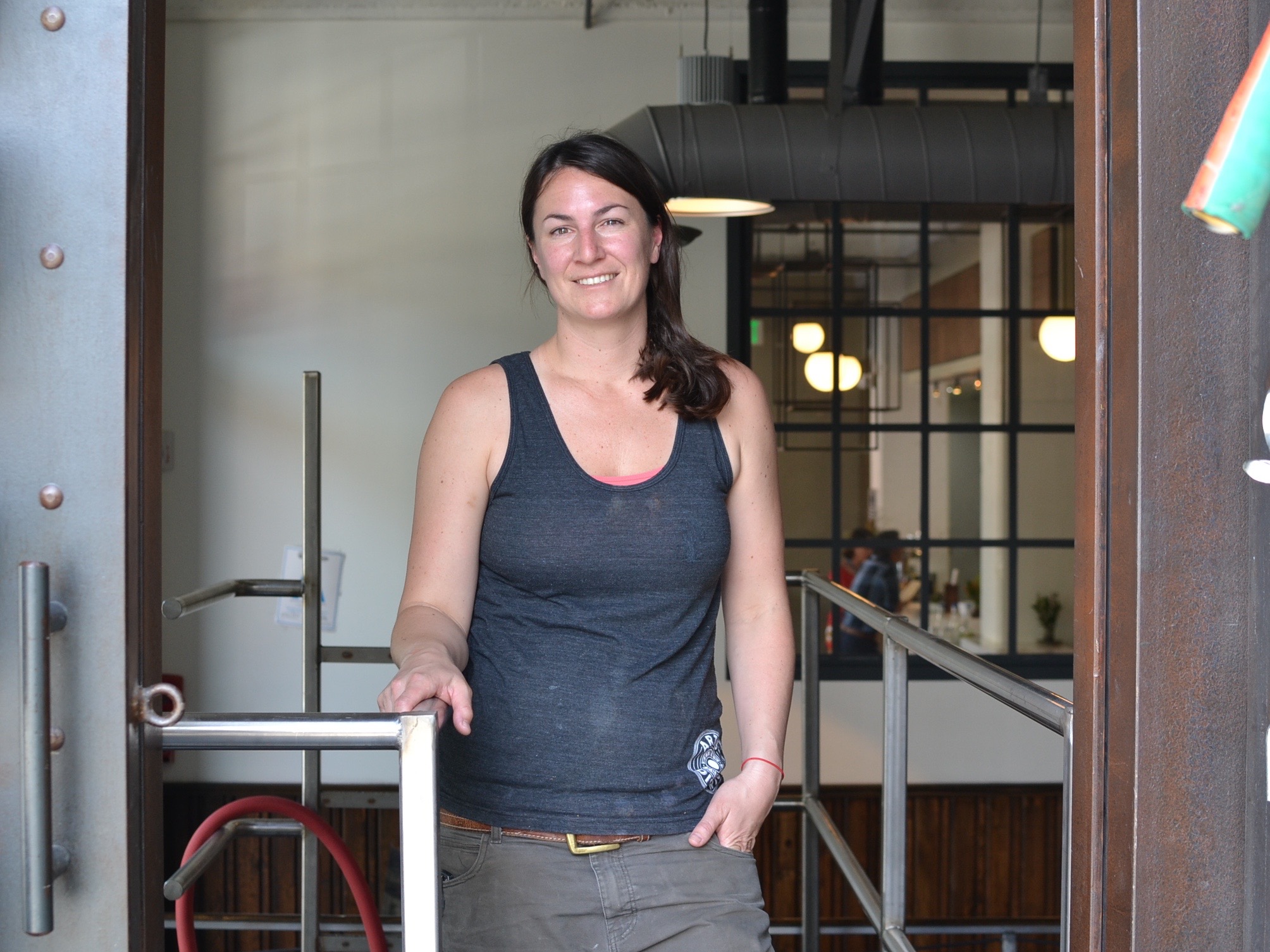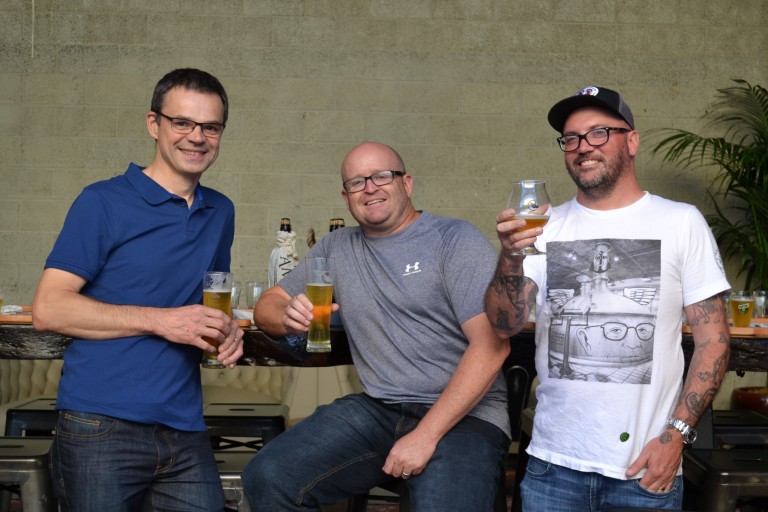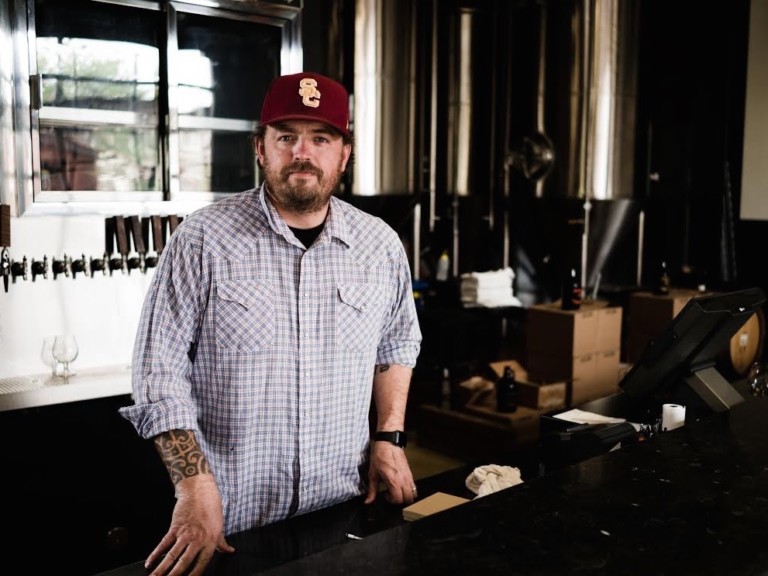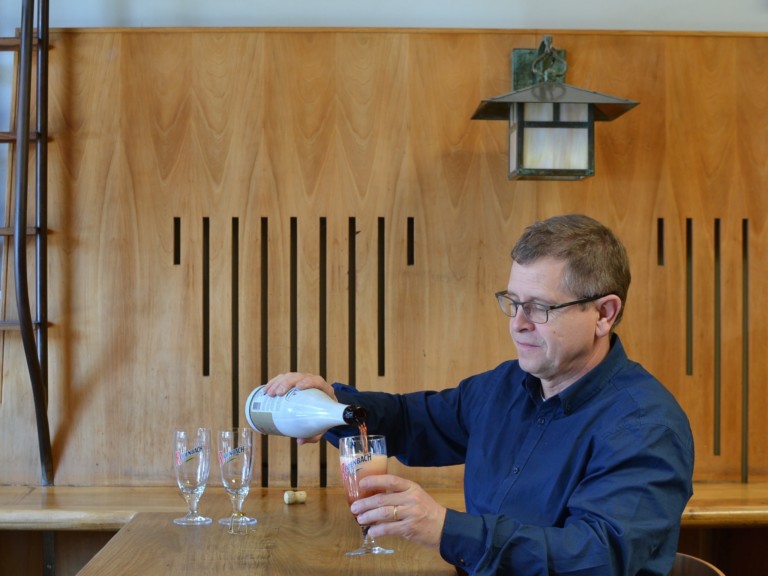Devon Randall is associated with San Diego due to her time at The Lost Abbey and Pizza Port Solana Beach, but she was actually born and raised on L.A.’s Westside in Santa Monica and Brentwood. It took a remarkable opportunity for the UC Berkeley grad, who majored in Mass Communications, to return home. Now Randall is head brewer for Arts District Brewing, an ambitious establishment that houses skee-ball, ping-pong, cornhole, and darts, but isn’t just fun and games. Learn more about Randall’s approach to beer, which is serious, but approachable.
Josh Lurie: At what point did it start to seem like you might actually brew for a living?
Devon Randall: I knew that I wanted to almost right away. Before I even actually got a job brewing, I kind of started thinking, “I wonder if I can do this and make a living.” Then I started asking questions, talking to people, and finding out that indeed people do make a living doing this. At that point, I didn’t have doubts anymore. That was probably around the time I moved over to Pizza Port and got my first head brewer position. That was the first time I went on salary. Beginning brewing positions are notoriously underpaid. It was kind of a hard thing to see making that much forever. Once I had a little more responsibility after moving over to Pizza Port, that’s when I thought, “Oh right, now my parents are going to believe that I can do this for a career.”
JL: What’s the first beer you ever brewed, either professionally or homebrew?
DR: The first homebrew I did was an amber ale, and I thought it was pretty good, but I’m sure it was total junk. I remember doing some things wrong, now that I know more about it, but I remember I packaged it up into bottles and gave it to a bunch of friends and family on Valentine’s Day. I don’t know if anybody actually liked it, but I thought it was wonderful.
JL: What did you call it?
DR: I don’t think I had a name for it. It was a recipe from Home Brewing Supply. It was Sunset Amber Ale, somebody else’s recipe.
JL: The one in Culver City?
DR: Yeah, Pacific Gravity’s home base.
JL: Was your first job brewing professionally at Pizza Port, or were you working somewhere before then?
DR: I worked at a warehouse for The Lost Abbey. They’re the first ones who gave me a paid position in a brewery. Before that, I had worked at beer bars, bartending. Lost Abbey gave me my first shot, and working in the warehouse was not terribly fun. Labeling or building paletts for distribution all day. It gives you a good idea what that’s about. If there were a pallet wrapping competition, I would totally win it. I wrapped hundreds, thousands of pallets. It gives you a little idea of how distribution works. We had seven distributors in different states and different areas of the state. It was an interesting introduction to that, that I wouldn’t have had otherwise. It was very lonely and dark. I started at Lost Abbey in March, and they started paying me in May. I was part-time until August. By September I started moving over to the cellar side.
JL: What years would this have been?
DR: 2010. It was months of working alone. I had a high school reunion, and a few of my friends were going to medical school or graduating from dental school or getting married and having babies, and I was like, “I make $10/hour in a warehouse alone.” It was a little bit of a moment, not totally of doubt, but a hard moment. “I live in an 8×10 room in someone else’s apartment and have no money. I hope this works out.” Eventually it did, but it was tough. I was thrilled. I was having a great time.
JL: Were you living in San Marcos, or somewhere else?
DR: While I was living in Pacific Beach, I also worked at Solana Beach as a bartender. I went full-time at Lost Abbey and moved up to Escondido and lived with Ryan Fields, who’s down at Beachwood Blendery now. We were roommates for a couple years. I lived there while I worked at Lost Abbey and bartended at Solana Beach. It came full circle. I was working both jobs, bartending two days a week and working at Lost Abbey three days a week. I just remember really preferring to go to Lost Abbey. Monday, Wednesday, I was bartending, so Tuesday, Thursday, Friday, I was at Lost Abbey, and I way preferred those days, even though they were longer and I made less money.
JL: Who do you continue to look to for guidance or mentorship?
DR: When I was first starting, the packaging manager Gordon Gerski gave me a lot of guidance. The head brewer there, Mike Rodriguez, taught me how to clean tanks. I remember it really well because it was Labor Day. Tomme said, “You can all come in on Labor Day, or you can take it off.” We weren’t really at the point of getting paid holidays for us little hourly employees, but he was like, “We have work to do, if you want to come in. If you don’t want to come in, don’t come in.” I showed up, Gordon showed up, and Mike showed up. He’s now over at Urge. There was a lot of work to do. Mike was like, “Let me show you how to clean tanks, and you can do the next one by yourself.” Now I spend a lot of time training my assistant, and the assistants that I’ve had. I felt like they needed someone to start cleaning, so they set me to it. From then on, I’ll clean any bright tanks or anything else that needs to be cleaned. That got me started going to the cellar.
JL: I imagined that was popular , that you volunteered for that duty.
DR: Yeah. Totally, and it was exciting for me. From there, I ended up doing barrels and any special operations or bottling line. I would go where needed, pulling samples for Tomme to try and blend. I got to be in on that, which was huge, and really fun, and really interesting. Then I left Lost Abbey to go to Pizza Port. Who trained me how to really make wort is Yiga Miyashiro. Lost Abbey, I would come in and brew for a few hours, but didn’t really have the intimate, one-on-one time with someone for a couple months, until I got to Pizza Port. Yiga really trained me how to be on the brew stand and how to be in control of your own system.
JL: What does a beer have to be for you to make it here at Arts District? What are the criteria for beer that go into your tanks?
DR: I try and keep a balanced tap list. If we went through the tap list right now, I’ve got a couple nitro options, some light options. A hibiscus beer is subbing as a fruit beer right now. The one thing that’s missing is a strong, dark beer. Oatmeal stout is pretty strong, but not that strong. The porter I have coming up is a little bit stronger. It’s in the 7s. I’m skeptical about putting really strong beers on because midnight on Saturday, anecdotally, I’ve heard stories from bartenders about people coming up and ordering four glasses of Azrael, a 12% Belgian strong, and four shots of Jameson. That beer went really fast. The batch was gone in three or four weeks.
JL: Is the smoked beer the most recent that you brewed?
DR: That’s the most recent beer that’s been on tap. We’ll be transferring the ginger lime saison later this week. It’s been a creative week.
JL: What inspired the ginger lime saison?
DR: Moscow Mule, the cocktail.
JL: What beer styles and specific beers do you enjoy drinking when you’re not drinking Arts District beers?
DR: I go to Highland Park Brewery pretty often because they’re by my house. They’re walking distance, so I love drinking their beers. Hello L.A. is their classic IPA, or the one I see on most often. It’s got Citra and Mosaic. Eagle Rock’s Revolution is also one of my favorites. I should go out more.
JL: How do you stay up on what’s happening with hops and different ingredients?
DR: We do have guest beers on here, so that’s pretty helpful. We do try and keep it pretty local. We have Angel City on pretty regularly. They do a really good black lager. We try to rotate our neighbors. Phantom Carriage Berlinerweisse is also on. There are opportunities to try new beer here.
JL: The experience at Arts District Brewing isn’t like a lot of breweries around town.
DR: No, it’s not a tasting room. It’s a bar. It’s totally different. A lot of people were turned off of that initially. The beer community expected to show up and have a nice curated experience, and we had lines out the door. It wasn’t the same. It kind of reminds me of going to Ballast Point in Little Italy. It’s cool. It would be a lot cooler to me if it weren’t crowded at all, but then that’s not a good business model. If it were empty and someone was sitting there really describing the beers, that’s more of the experience I think a lot of people are imagining that they’ll get. It’s just not a tasting room. It’s uniting all sorts of other crowds of people.
[Randall walks me to the back of the patio to share an additional upcoming concept.]
This is going to be the same design as everything out there. It’s a little bit smaller. Capacity will probably be 30 people. There’s one bar, six taps. They’re working on getting a to-go license, like a bottle shop. At this point, there will be bottles, special stuff that we don’t have in there, as well as anything special from the brewery, either small-batch or barrel-aged. And hopefully we’ll have really beer-centric people. They’re going to have spirits back there, but no cocktails. We’ve got a Boilermaker menu, which is the idea of a shot and a beer after work, which is normally PBR and whiskey. We’ve been changing that around and doing a Boilermaker menu with only house beer and really paying attention to the pairing. I’ve seen other places do it. Verdugo Bar has a little menu like that. We’ll have that available back here, but we won’t have full-on cocktails. It will be a little different. The working title for it right now is The Study.
JL: How did the opportunity with Arts District Brewing come about for you?









Blog Comments
ferm
February 28, 2018 at 12:33 PM
So many times I’ve heard “I wonder if I can do this and make a living.” and me myself answered “no”, instead I started selling accessories. It’s cool, but still I do wonder sometimes “what if”